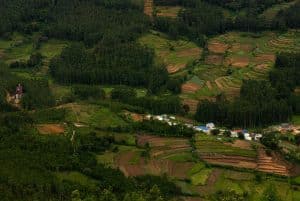Zoom Towns Bust: Remote Workers Fleeing Overpriced Havens
Over the past year, the global pandemic has brought about significant changes in our work and personal lives. As most businesses shifted to a remote working model, people have more freedom than ever before to choose where they live. This has resulted in a new phenomenon known as “Zoom Towns,” where remote workers flee overpriced cities in search of more affordable and liveable locations. However, as remote work becomes more mainstream, is this trend starting to see a decline? In this article, we’ll take a closer look at the rise and potential bust of Zoom Towns, and what it could mean for remote workers and the regions they flock to.
The Rise of Zoom Towns
When the pandemic hit and countries around the world implemented lockdowns and stay-at-home orders, many people found themselves confined to their homes. This gave rise to the need for effective remote working solutions, and virtual meeting platforms such as Zoom became the go-to option for businesses and individuals alike.
As people realized they could work from anywhere with a stable internet connection, the idea of living in a remote and scenic location became a reality. With no need to live near their office or commute to work, workers flocked to towns and cities that offered affordable living, natural beauty, and a slower pace of life. These newfound “Zoom Towns” offered the perfect blend of remote work opportunities and a desirable lifestyle.
The Attraction of Affordable Living
One of the main driving factors behind the shift to Zoom Towns was the ability to live in more affordable locations. With no need to pay exorbitant city rent prices or deal with the high cost of living, remote workers saved a considerable amount of money by moving to smaller towns or rural areas. This has allowed people to enjoy a higher quality of life and financial stability, with families often finding it easier to afford a home with more space and amenities.
The Allure of Natural Beauty
Another significant factor that contributed to the popularity of Zoom Towns is the natural beauty that many of them offer. After spending months in crowded cities, people began to appreciate the benefits of living near nature and taking advantage of outdoor activities such as hiking, biking, and skiing. Regions such as the Rocky Mountains, the Adirondacks, and the Pacific Northwest saw a surge in remote workers seeking a more natural and tranquil environment.
The Appeal of a Slower Pace of Life
The pandemic has caused significant stress and burnout for many, and the fast-paced city lifestyle often adds to these pressures. With no need to rush to work every day, remote workers in Zoom Towns have embraced a slower pace of life that offers a better work-life balance. This has resulted in increased mental and physical well-being for those who have made the move, and it’s a factor that continues to attract more people to these regions.
The Potential Bust of Zoom Towns
While the rise of Zoom Towns has been remarkable, there is growing concern that this trend may soon see a decline. As the world slowly emerges from the pandemic and businesses start to reopen their offices, remote work may not remain as prevalent as it is now. Many companies are already planning to bring their employees back to the office at least part-time, while others are considering a fully in-office work arrangement.
This shift back to traditional working methods could mean that remote workers will have to return to the cities they were trying to escape. It could also lead to increased competition for jobs in the already saturated job market of Zoom Towns. Additionally, the sudden influx of remote workers in these small regions has also led to an increase in the cost of living, making these locations less affordable and desirable for remote workers.
The Importance of Sustainable Development
The potential bust of Zoom Towns highlights the importance of sustainable development in these regions. While the initial influx of remote workers has had a positive impact on local economies, it’s crucial to maintain a balance to ensure the long-term viability of these areas. Local governments and organizations must carefully plan and manage growth to avoid overdevelopment and preserve the unique charm and affordability that attracted remote workers in the first place.
The Future of Zoom Towns and Remote Work
While the potential bust of Zoom Towns may be a cause of concern for some, remote work is here to stay. The pandemic has shown that people can work and collaborate effectively from anywhere, and this shift is likely to continue even as the world returns to some level of normalcy. However, this also means that remote workers and the regions they flock to must adapt and evolve to ensure mutual success.
The Need for Flexibility and Adaptability
As remote work becomes more mainstream, it’s essential for both businesses and individuals to be flexible and adapt to changing circumstances. This could mean offering a hybrid work model that combines both remote and in-office work, or being open to taking on freelance or remote positions that may not be location-specific. Similarly, regions labeled as Zoom Towns may need to diversify their economies and offer more job opportunities to sustain growth and support remote workers.
The Importance of Community and Connection
In addition to adaptability, it’s crucial for remote workers to find a sense of community and connection in their newfound locations. This could mean connecting with other remote workers through virtual or in-person meetups or getting involved in the local community through volunteer work or events. Building and maintaining a support network can help remote workers thrive and feel more connected to their new homes.
In Conclusion
Zoom Towns have undoubtedly played a significant role in providing relief and opportunity for remote workers during the pandemic. However, as remote work continues to evolve, so too must the regions that have become synonymous with this trend. With sustainable development, flexibility, and a sense of community, it’s possible for both remote workers and Zoom Towns to thrive in a post-pandemic world.










